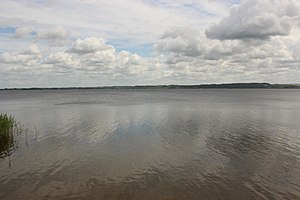
A prominent position was held by wetlands and islands in Germanic paganism, as in other pagan European cultures, featuring as sites of religious practice and belief from the Nordic Bronze Age until the Christianisation of the Germanic peoples.
Depositions of items such as food, weapons and riding equipment have been discovered at locations such as rivers, fens and islands varied over time and location. The interpretations of these finds vary with proposed explanations including efforts to thank, placate or ask for help from supernatural beings that were believed to either live in, or be able to be reached through, the wetland. In addition to helpful beings, Old English literary sources record some wetlands were also believed to be inhabited by harmful creatures such as the nicoras and þyrsas fought by the hero Beowulf.
Scholars have argued that during the 5th century CE, the religious importance of watery places was diminished through the actions of the newly forming aristocratic warrior class that promoted a more centralised hall culture. Their cultic role was further reduced upon the introduction of institutionalized Christianity to Germanic-speaking areas when a number of laws were issued that sought to suppress persisting worship at these sites. Despite this, some aspects of heathen religious practice and conceptions seem to have continued after the establishment of Christianity through adaptation and assimilation into the incoming faith such as the persistence of depositions at holy sites.